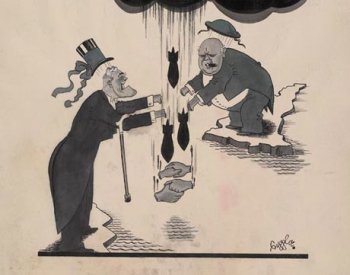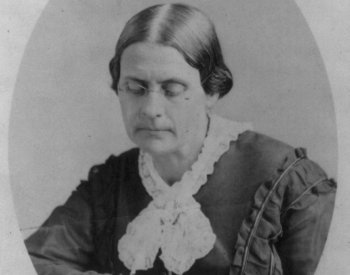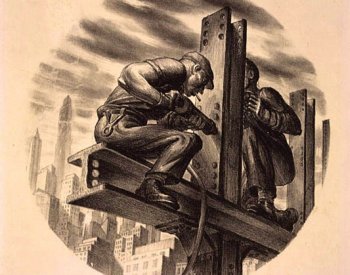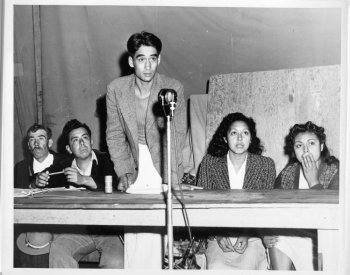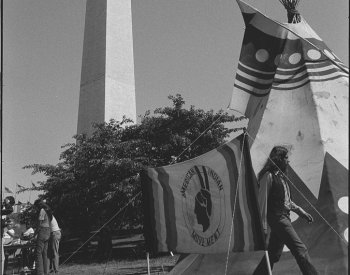To answer this question correctly, students must determine that Letter A was written before Letter B and use relevant evidence from the documents to justify their answer.
Level: Proficient
- Student identifies changing federal attitude toward government intervention OR change in the nature of violence directed toward African Americans.
- Student justifies answer with evidence from the letters.
- Student may incorporate specific historical information, such as the date and impact of Brown v. Board of Education.
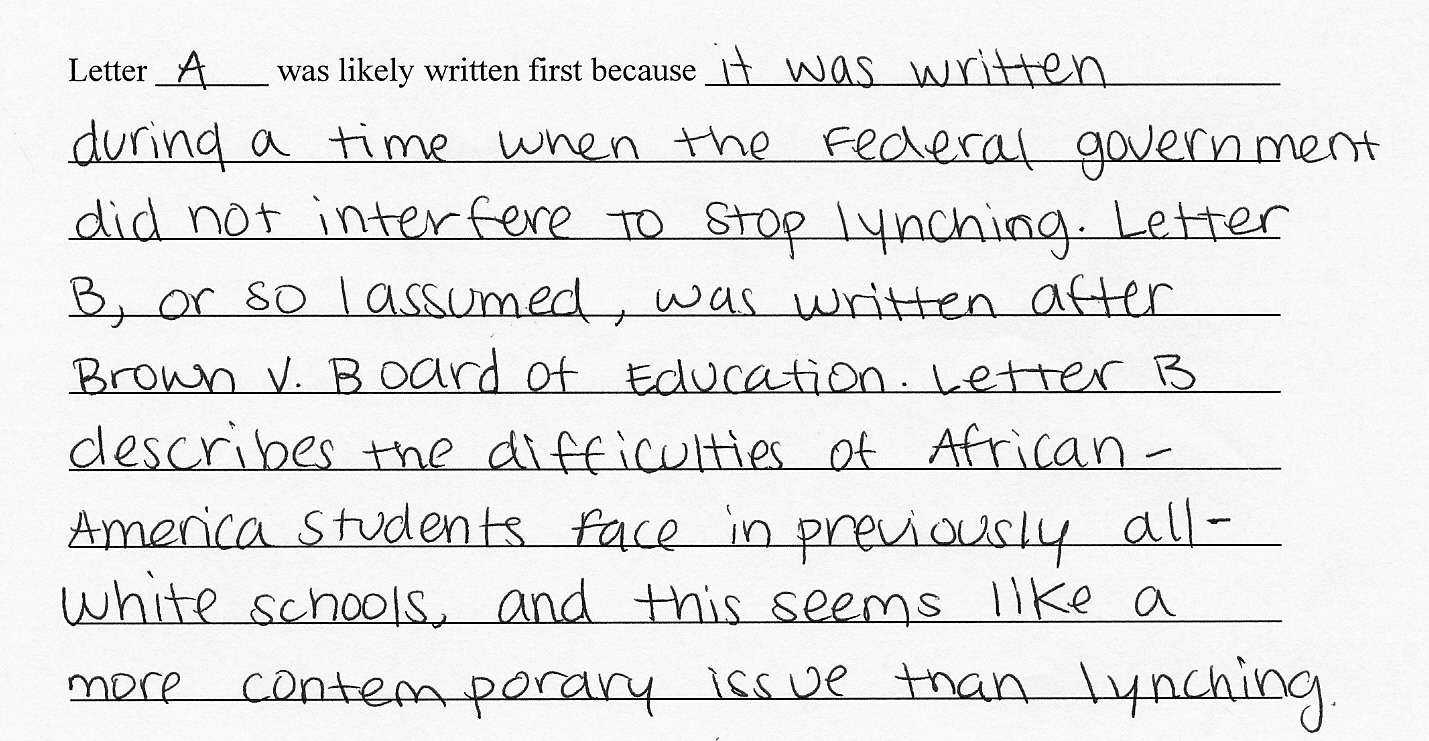
Background knowledge is accurately used to support argument.
The student establishes a broad narrative of the civil rights movement: the apex of lynching took place before the desegregation of schools.
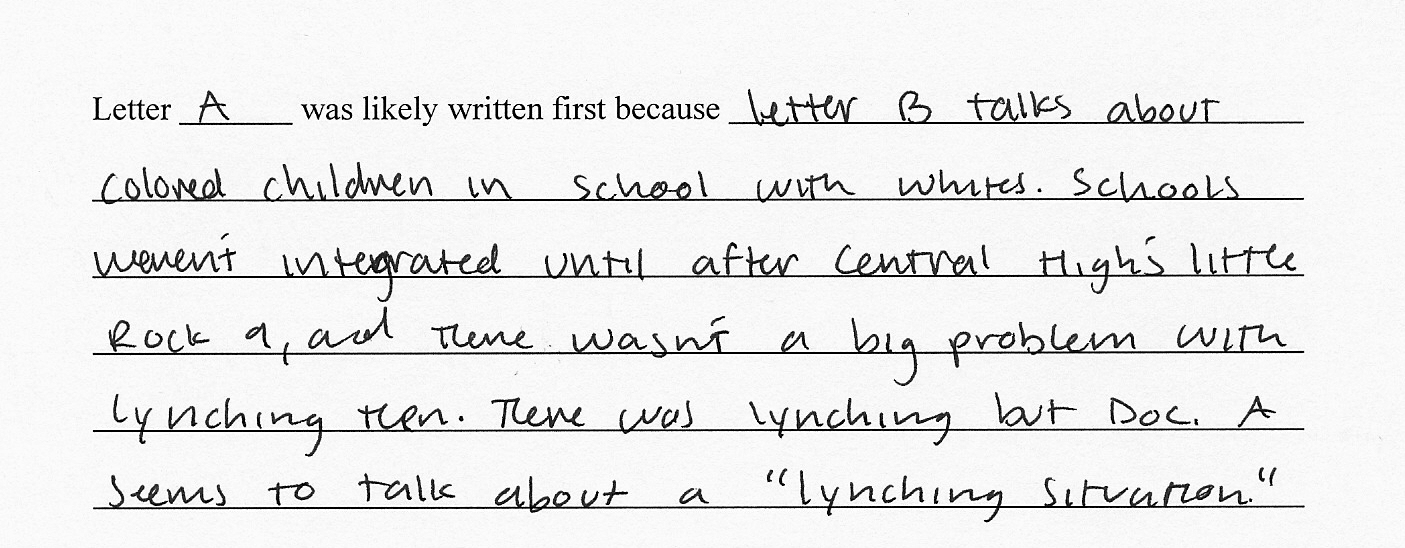
The student draws on background knowledge to establish a general timeline of the civil rights movement.
A close reading of the document allows the student to infer from the text that the document was referring to a more widespread problem.

The student correctly identifies a change in the willingness of the federal government to intervene in civil rights issues.
Level: Emergent
Student places the letters in the correct order but provides minimal supporting evidence or provides an incomplete explanation.

This answer demonstrates an understanding of increasing support for the civil rights movement during the 20th century, but the student does not explain why Letter A was written first. Instead, the student provides a rationale for why Letter B was produced at a later date.

The student correctly orders the letters but draws conclusions about the president not supported by the evidence. Instead of considering the context of the time and why Roosevelt failed to act, the student jumps to the conclusion that the president was racist.
This statement about the timing of the letter suggests a misunderstanding of the chronology of the civil rights movement. The student believes that school desegregation began in the 1960s, after John F. Kennedy's presidency.

The letters are placed in the correct order, but the reasoning to support this choice is unclear.
Level: Basic
Student incorrectly orders the letters or does not provide a relevant explanation.
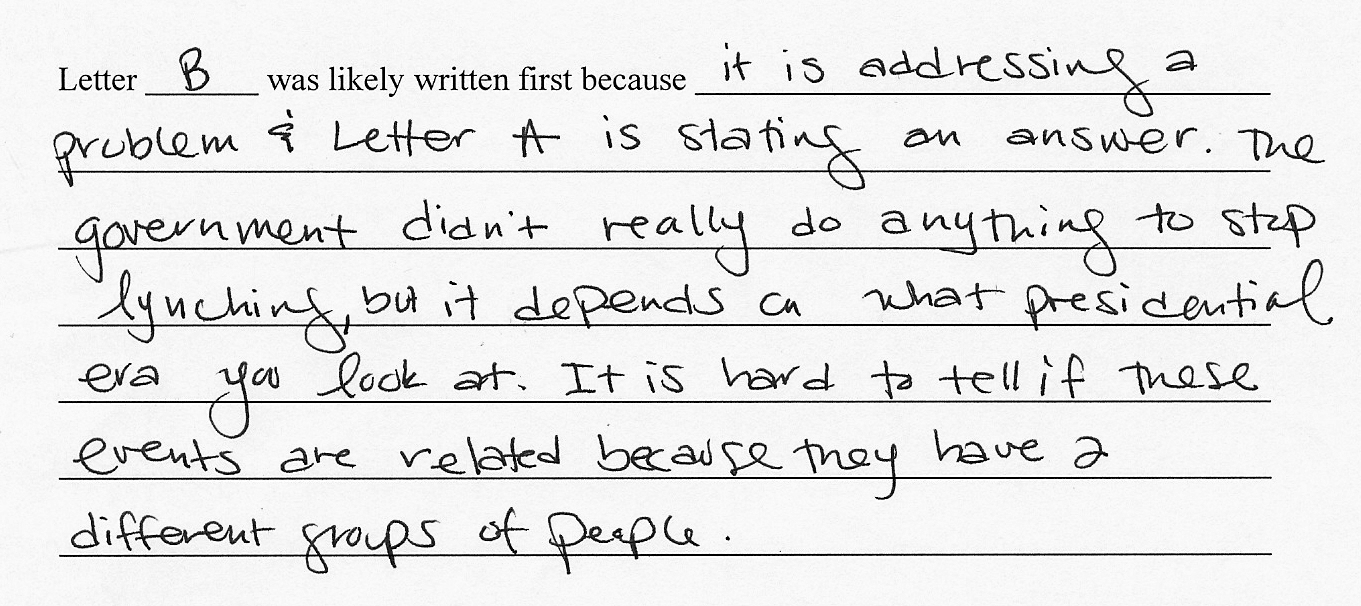
This response does not provide any relevant details or support its claims.

There is a certain logic to this response: desegregating schools provoked intense anger, which led to lynchings. Unfortunately, this is historically inaccurate. The number of lynchings soared in the first few decades of the 20th century and sharply declined by the time of school desegregation in the 1950s.

This student correctly notes that the president is more engaged in Letter B, but concludes that the president does not yet understand the seriousness of the problem. This indicates that the student does not understand the history of increasing federal intervention during the civil rights movement.
